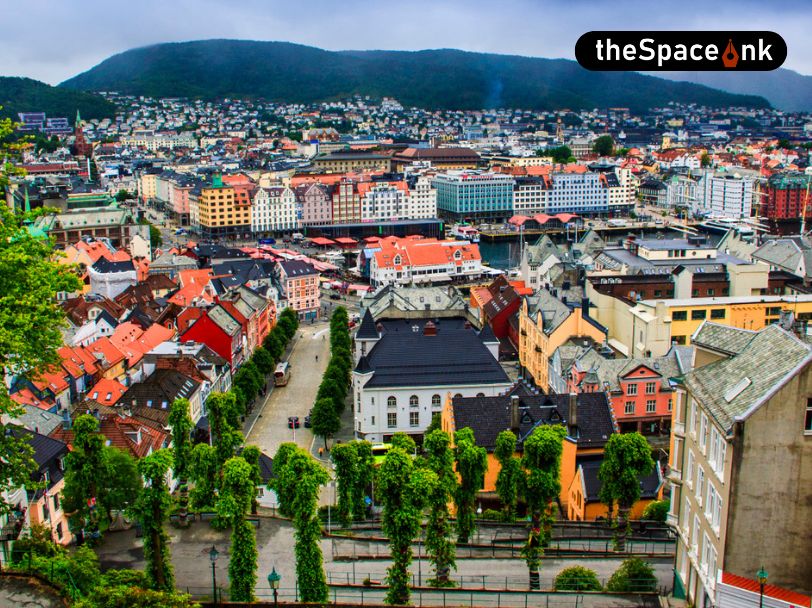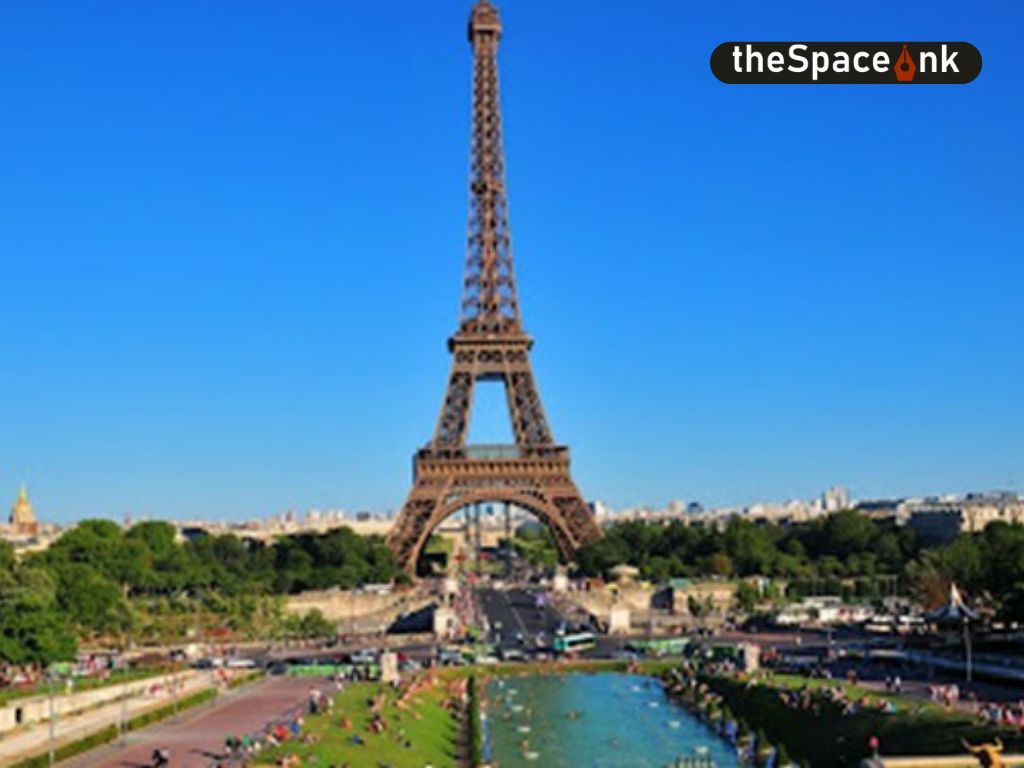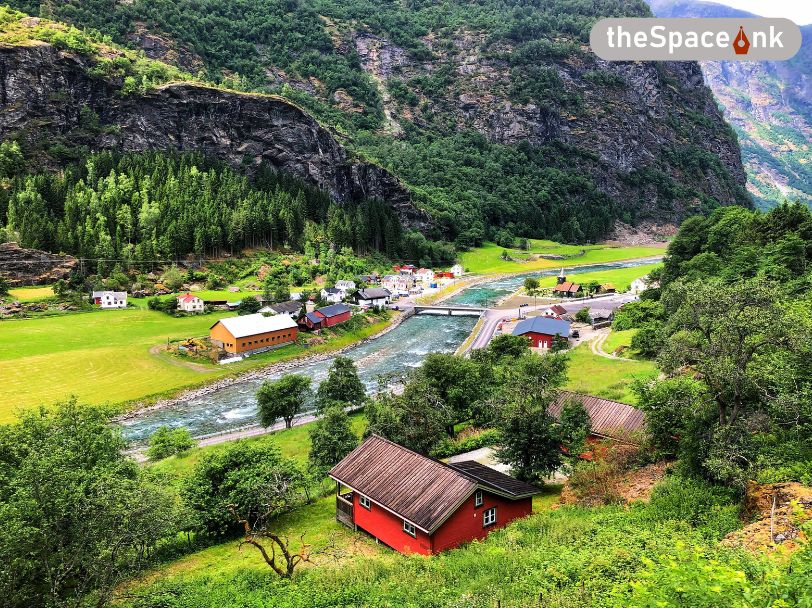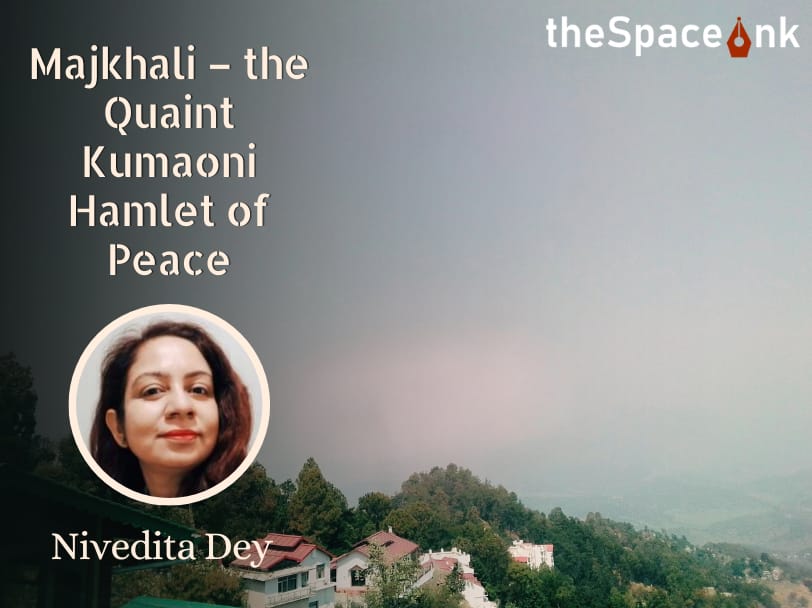I landed on the cheery banks of the Narmada on a late autumn morning of Dev Deepawali. It was the first time that I met a river so solemn with enchanting dark waters like a poised dark maiden. Witnessing what was evidently a river-centric belief system with its own practices and rituals, the astonishing camaraderie between the devotees, a chemistry of colors and felicity, I was bound to think that God did not stop after saying, ‘Let there be light’. There was a pause. Then He surely cued up, ‘Let there be colors’, ‘Let there be stories’. And the provocative exhibition of light and colors began to tell the tales. This was my immediate feeling while I set foot as a traveler at Bhedaghat, approximately twenty kilometers from the famous city of Jabalpur, Madhya Pradesh. The state lying in the center of the country is called ‘The heart of India’ by many.
I was just-a-day old in Bhedaghat where shutters rolled for sights, lights and colors. Histories and true-to-life stories were wisdom of the roads. The town was profound like poetry yet incredibly simple, utterly mesmerizing and never ending like a short story.

A tide of people was flooding the staircases of Gwarighat, one of the ghats in Bhedaghat. Mooing cows were of greater significance in the throng. Barking of stray dogs contributed to the razzle-dazzle along with the conscious cries of various vendors, chanting of the Brahmin pundits. Few country boats with flamboyant shades were on the river. Flocks of black-headed gulls were enjoying tiny wheat balls thrown in the water. Devotees taking a holy dip– the Kartick Snan, were offering the water of the river to the river itself. Women in sarees have covered their heads with pallus and are busy in puja rituals, drawing rangoli and listening to Akhanda Ramayana.
A pundit was preaching Narmada Mahatmya. He said that Narmada is not a mere river but a mother to all who seek her blessings. Even Ganga takes a holy plunge in the Narmada to clean all her impurities.

A warm breezy voice called me from back. ‘Hello’, she said with a non fussy smile. ‘What are you doing with the camera? Are you from the media?’ I assured her with a smile back. No. Just a traveler. ‘A traveler!’ she echoed. Her expression wasn’t bothersome even if I was a media person. Instead she called her friends and was ready to pose for as many photographs as I could take. They started singing and dancing with a brass statue of Balgopal on their head and painted the air with celebration of splendor. In the dusty haze of colors it felt like Holi. They pulled my hands to join them. Elderly women were very keenly participating in Satyanarayan Katha and Tulsi Vivah in the auspicious moment of Raas or Kartik Purnima while the young hearts took a narrow escape in fun and laughter.
Also read: Miracles in Tikiapara
One of them eagerly shared the story of Vrinda or Tulsi getting married to Lord Vishnu appearing as Shalgram shila on the day of Kartik Sukla Ekadashi. ‘Some people continue the ritual of Tulsi Vivah even on Kartik Purnima’, she added.
And the stories never stopped. Passed from one to another like a much-played-childhood-game, Chinese whisper, adding anew. As it’s said, a tale told ten times is never stale as it keeps forming from one story teller to another.
The young lady now approached me for their photographs and willfully gave her contact details. Dipti, a name for radiant vibes. The way she looked and laughed. Her triggered attitude came from the power of gratitude, as she told me her story of fighting the pandemic and having a brush with death. ‘I’m still alive’, she beamed. Suddenly the show stealer, a pair of Grey Hornbills, pushed the envelope of the morning ambience by their loud call and grand flight.

A few namkeen and mithai shops have just opened. Locals were enjoying hot fried moongoras (moong dal pakodas). Piping hot tea in a clay pot smelt unparalleled. A sugarcane juice seller was cleaning the canes just beneath the Neem tree. I could see the ghat and the river from here. I sat on the bench doing nothing but gazing at the busy birds and street. Dipti smiled gratefully at me and pressed my hand neither too firm, nor too light. She along with her friends departed telling me to meet them at Saraswati Ghat in the evening.
Following the crowd I chose to go by foot at Dhuandhar Falls, not very far. Most of them were carrying a branch of a tree, especially Tulsi. Vendors were selling vermillion in heaps. The sarees of the devotees hanging from the safety railings colored the backdrop. Roaring sounds of water were heard from a distance. Sadhus, pujaris, vendors, locals, tourists, tribes, stray dogs and cows, cable cars and lovers were on the stage. The protagonist was visible now. From the alleys of the marble rocks the Narmada is like an acrobat debouching deep from a thirty meters steep gradient with immense volume of water. Alley-oop! Ubiquitous boomerang of the water particles was creating a misty conundrum. As if asking, where have you come from, oh, mighty river?

A sadhu in saffron said, ‘Narmada is the daughter of Shiva and her birth is from His sweat. She is a virgin but a mother to everybody who calls her Maiya or Reba Ma. I nodded, as I have heard people say, ‘Maiya bahati hai’– Mother is flowing!
A stuntman who was trying to imitate the same action like the river was indulged by a group of photographers. The sun was almost in the mid sky and the light was not favorable for the shutterbugs. Still the quintessential shot of a local diving from the risky height was a must chase for all of them with a common goal and devotion. Noticing my curious eyes one of them said with a chuckle, ‘A themed tour saves the agony of dissimilar accompaniment’.
I walked along the mood board of colors and religious rituals of Katha. This time an auto dropped me at the gate of Chousath Yogini temple from where I could raise my neck and find in dismay the uncountable stairs reaching up to the sky. Oops, my poor knees! People good at counting were coming down figuring out almost one fifty stairs. Climbing up brought the sky nearer. One after the other the raised plinth, roofless circular perimeter and the shrine shikhara became visible.

The temple of Lord Shiva and Mata Parvati was in the middle of the circular architecture. The priest apart from his must do rituals was keeping a strict eye on the mobile phone activity of the visitors and his ultra precise words were all about the don’ts in the periphery. Outside, a caretaker tried to take me in a twin journey of myth and history to a bygone era of ancient Abantinagar of the large Mandhatakshetra. Part of that was this Golaki Math as it is called for its round geometrical structure. The walkway had the stone sculpture of the yoginis which combine voluptuous beauty and wicked stories of vandalism. He added that the largest among the other Yogini temples was built by the kalachuri dynasty in the 11th century AD when the town was named after the dancing Bhairava, Bhairav Ghat. Turning back at the temple was a bird’s eye view of the fist sized town, Bhedaghat and the river lying like a ribbon.
One can sign up for a tour in this old and divine town not only exploring on foot for mandir and math but also to experience the marvelous landscape in a boat cruise. The backdrop changes from blue to white and grey, pink marble rocks. The boatman offers a plethora of guidelines with a good sense of humor. To find out if there’s a crocodile, the Vaahan of the Narmada, he suggested pushing one of us in the water and waiting for the result. Of course none of us volunteered.

Somewhere the river is narrowed down into the almost impenetrable canyon formed by the labyrinth of marble rocks jutting out of the river bed. Red wattled lapwings, white breasted kingfishers were keeping eyes peeled for treasure hunt. At the bell’s chime from a nearby temple the setting sun showed us the unrepeatable magical hues on the rocks and the river.
I left for Saraswati ghat through the alleys of artisans crafting marbles into artifacts. One will surely stop here for such marvelous wonders and lucrative souvenirs. Dipti and her friends waved hands at me. They were all busy lighting up diyas and decorating the staircases of the ghat. Earthen lamps were offered to the river itself. Dipti said, “This is Diwali of Gods, celebrated as the victory of Tripurari Shiva over the devil trio, Tripurasura and the full moon also named Tripurari Purnima. It’s also believed to be the birth anniversary of Kumar Kartik and the day Lord Vishnu entered his first incarnation, Matsya”. Narmada Stotram followed Narmada Aarti by the priests and devotees.

On the night of Kartik Purnima, Bhedaghat is a wonderspot. The moon herself admires the beauty of the night lit with diyas and the solemn dark river. A selenophile considers the moon flooded marble rocks as his first milestone on the road to the moon.
Notes:
- Kartik Purnima- Full moon night in late November. The 15th lunar day of the month of Kartika.
- Narmada Mahatmya- Sacred text depicting the greatness of the Narmada river. Part of Agni Purana.
- Katha- Religious/mythological storytelling
- Akhanda Ramayana- Recitation of the Ramayana for 24 hours without stopping.
- Moongora- Deep fried Moong dal fritters
For more information on visiting Bhedaghat, Marble Rocks and Dhuandhar Falls, please visit https://www.mptourism.com/destination-bhedaghat.php
Sharba Ghosh Nath, a former teacher of Communicative English and Personality Development is a nature lover, writer and photographer. She has a keen interest in trekking, bird watching, bird photography, alpine and wild flowers. She has been writing for years in several prestigious magazines and e-magazines such as Desh, Shiladitya,Tathyakendra, Bhraman Adda, Bhromi, Bhraman Nesha, Riddhi, Neelkantha, Sukhopath, Chorki, and many more. She is a member of Travel Writers’ Forum India and Associate Editor of a popular travel magazine. She has excelled in writing poetries and also stories and travelogues for children.








8 Responses
Wonderful. Had a tour in an articulate vehicle.
Wonderful
Beautiful write up and photography
While going through the travel story I feel as if a part of it .It’s so illustrative vibrant which makes the story to esteem . Supporting photographs are extremely beautiful.I wish her all out success in writing and travel photograph.
Excellent.
Excellent
Excellent
Excellent
It was ruminating for me as I was also one of her co travellers. Nicely and vibrantly narrated. Narmada Arati by anyone wishing to do at Saraswati Ghat was a novel idea.
Wonderful composition of travel and literature, feeling god grace.